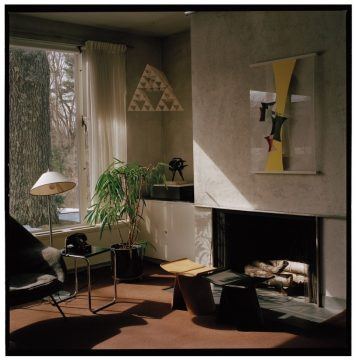Dan Chiasson at The New Yorker:
 Because his genius was untethered to his misery, and because he often handed his ideas off to others, Gropius is a tricky subject for a biographer. Following his lead, we focus on his colorful and eccentric supporting players. As MacCarthy suggests, he had none of the puffery we associate with great architects. He was more a technocrat than a shaman. In a sense, therefore, MacCarthy’s book is a biography of the Bauhaus itself. It’s a story that she presents with a distinctly human-seeming arc. Its childhood unfolded in Weimar, where Itten impressed the students with his mantra, “Play becomes party—party becomes work—work becomes play,” and Gropius read the Christmas story aloud every year. But by early adolescence, in the mid-twenties, the Bauhaus had outstayed its welcome. In 1924, a new provincial government threatened to cut off the school’s subsidies. Nazi factions in the region supposed that all those foreign-looking students were Jews or Jewish sympathizers. The following year, Gropius moved the school to Dessau, an engineering and manufacturing center, southwest of Berlin. There, for the first time, the Bauhaus built itself a campus.
Because his genius was untethered to his misery, and because he often handed his ideas off to others, Gropius is a tricky subject for a biographer. Following his lead, we focus on his colorful and eccentric supporting players. As MacCarthy suggests, he had none of the puffery we associate with great architects. He was more a technocrat than a shaman. In a sense, therefore, MacCarthy’s book is a biography of the Bauhaus itself. It’s a story that she presents with a distinctly human-seeming arc. Its childhood unfolded in Weimar, where Itten impressed the students with his mantra, “Play becomes party—party becomes work—work becomes play,” and Gropius read the Christmas story aloud every year. But by early adolescence, in the mid-twenties, the Bauhaus had outstayed its welcome. In 1924, a new provincial government threatened to cut off the school’s subsidies. Nazi factions in the region supposed that all those foreign-looking students were Jews or Jewish sympathizers. The following year, Gropius moved the school to Dessau, an engineering and manufacturing center, southwest of Berlin. There, for the first time, the Bauhaus built itself a campus.
more here.
